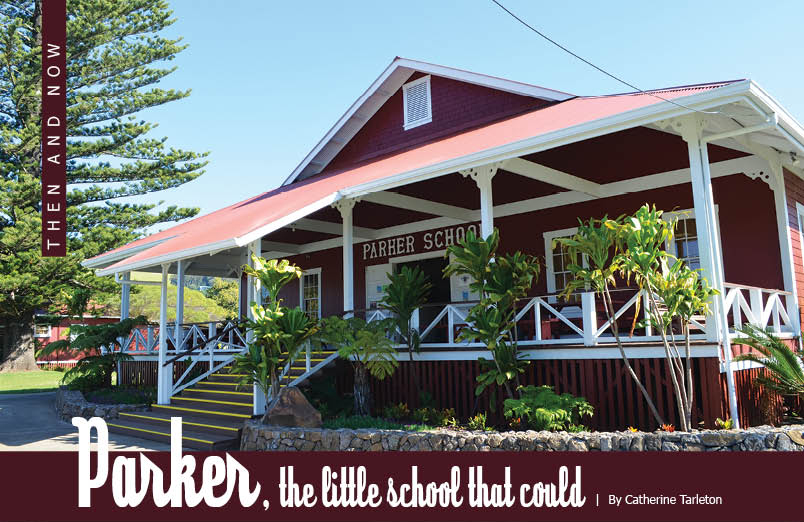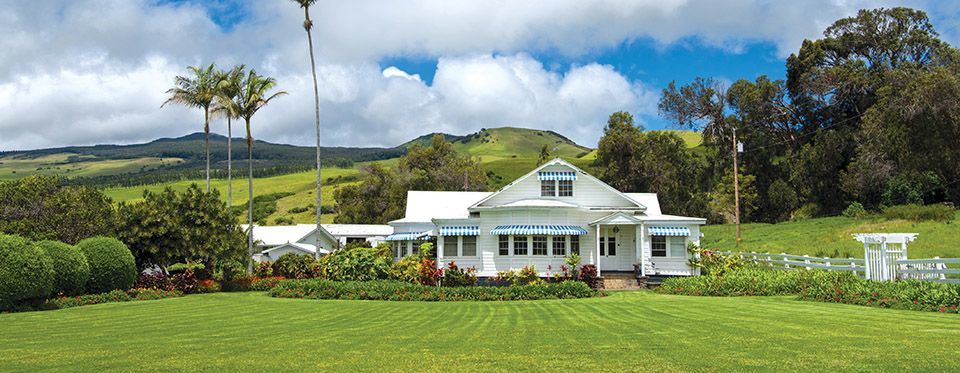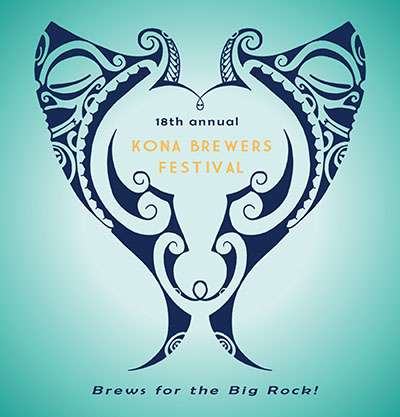
Parker, The Little School that Could
By Catherine Tarleton
The red ranch building with the wide white porch rail is 101 years old, and has lived three different lives: as a social hall, USO, and now Parker School.
This small school, originally created to serve “indigent children,” produces National Merit Scholars and U.S. Presidential Scholars—100% of graduates are accepted into colleges. In statewide rankings of private schools, it is on par with Punahou and ‘Iolani year after year. Parker School has about 330 students, a little more than half on financial aid.
The Road from There to Here
In the winter of 1900, well known Honolulu lawyer and businessman Alfred Wellington (A.W.) Carter had been appointed by Elizabeth Parker as guardian and trustee to her infant daughter. Annie Thelma Kahilu‘onapua‘api‘ilani Parker was Parker Ranch’s sole heir. In the next 50 years, Carter would protect her interests, and expand them broadly, along with many facets of what was then a more rugged Waimea community.
Carter found a ranch that was struggling. The livestock weren’t in the best condition and had not been bred properly. Many wild “pipi” (beef cattle) still roamed the landscape. The ranch paniolo (cowboys) liked to play as hard as they worked, and kept the town’s two saloons busy.

A believer in industry, family, and faith, Carter set out to help strengthen those values in Waimea—as he was strengthening the cattle. To provide workers recreation options, he built ballparks, a bowling alley, and a pool hall. For their families, he put up churches of all denominations, schools, and more.
By 1915, he also opened a large recreation center, at a cost of $6,594.02. Named “Barbara Hall,” for his oldest daughter, it was fully equipped for elegant entertaining.
“An orthophonic Victrola record player was provided with an appropriate repertoire, including classical, contemporary, and even Japanese renderings. Other musical instruments were available for use, including string and steel guitars, Kumalae ukuleles and bass violas, along with violins and bows,” according to Dr. William Bergin’s book, Loyal to the Land, Parker Ranch 750-1950.
Barbara Hall became the social hub of Waimea, home to the ranch’s New Year’s Eve lū‘au, public dances, charity fundraisers, movies, the occasional large funeral, and most memorably, the Parker Ranch Christmas party. Community nonprofit Friends of the Future captured some of those memories in its book, Paniolo House Stories.
“The event featured a huge, elaborately decorated Christmas tree and gifts for all of the children of Waimea. Brown paper bags contained apples, oranges, and nuts. Everyone looked forward to an evening of songs and the appearance of Santa Claus. With few cars, families walked from all over town to the hall, carrying their kerosene lanterns for light. Interviewees all fondly remembered the Christmas parties with bright lights, gifts, food, and songs. The ice cream served to all the children was one of the fondest memories. Parker Ranch families received additional gifts, including the famous Parker Ranch turkeys caught up at Waiki‘i and on the Mana Road.”
Second Life
The Christmas parties went on hiatus during WWII, and Paniolo House Stories also gathered memories of a wartime Barbara Hall. Oral history interviewee Bea Leina‘ala Ho‘okahi Nobriga remembers listening to the radio on December 7, 1941. “All I heard was the President on the radio announcing, ‘This is war,’” she says in the book.. “All the ladies and all available girls that didn’t have to work or have a job went up to the hall.”
The women, guided by Thelma Lindsey, made rolled bandages. “We cut fabric and made gauze in the blue paper. Everybody lined up, wash hands, had very sharp scissors,” Bea says.
From 1942-44, Barbara Hall helped Waimea welcome 55,000 U.S. Marines to “Camp Tarawa” on the outskirts of town, where they trained for the Battle of Iwo Jima. Almost overnight, hamburger stands, laundries, and souvenir shops sprouted all over town. Barbara Hall became a very busy USO Club.
During that time, soldiers built additional structures at the Hall: the movie theatre, and what is now the school’s lower hall. It must have been hungry work, and Bea worked in the USO canteen.
“They wanted meat, any kind of meat,” she says. “Hamburger—they go crazy; hot dog—they go crazy.”
Before that, ground beef was not common in Hawai‘i kitchens. Bea says they sold a nice thick burger made with Parker Ranch beef for about a dollar, and all the troops ever wanted to drink was Coke.
Meanwhile, Thelma Parker had grown up, married, and given birth to Richard Smart in 1913. Richard’s parents died when he was only two years old. Again, Elizabeth “Aunty Tootsie” trusted A.W. Carter with the ranch while she raised grandson Richard.
Richard would also rely on Carter, and later his son Hartwell, to capably manage the ranch, while the young man pursued what became a successful acting career in California and New York. He came home for good in 1960, and decided to re-christen the venue as “Kahilu Hall,” in honor of his mother, during the Ranch’s 125th anniversary celebration in 1962.
School Days
In 1973, Paul and Anita DeDomenico came to the island from San Francisco, to establish the Hawaiian Holiday Macadamia Nut Company. Paul’s father had just sold the family’s business, Ghiradelli Chocolate Co., in San Francisco. With two children of their own to educate, the DeDomenico’s saw the need for a private day school in town. They founded Parker School within Kahilu Hall, which opened in 1976 for 58 students, grades 9–12. The following year, the middle school was added, 7–8 grades.
“They had asked Richard Smart if they could use the building,” says Wendi Roehrig, who started teaching Art at Parker in 1978. “He was interested, and would come visit often.”
Always a strong supporter of education, Richard formed an education trust for Parker School. He underwrote tuitions, did not charge rent, and had ranch workers help with maintenance.
“I met Richard Smart at one of the graduations. We chatted about his art collection, and he said ‘Have your kids come over,’” says Wendi. “He would take them on tours. He was great with my kids—he had dreams for art in the schools.” When she taught a course in art critique, she would bring her high school seniors to his home, Puuopelu, to analyze original paintings by Claude Monet, Camille Pissarro, and many more.
Wendi retired after 30 years with Parker. She is also the proud mom of four Parker graduates. “I was there in the beginning,” says Wendi. “A lot of love went into that school. Community showed some real support.”
21st Century
A new Headmaster, Carl Sturges, came on board in 2002, and in 2005, the “lower school,” was added. Emily Pagliaro, now the school’s Admissions Director, placed her daughter in the first grade at Parker the following year. As a member of the Class of 2017, she will be among Parker School’s first complete core K-12 group to graduate.
“I give tours all the time and I get the privilege of introducing people to the school and people always comment how happy the kids are. Kids come up and say ‘Hi, how are you?’ ‘Where are you from?,’” says Emily. “One of the most surprising things to me is, it’s one of the first places kids visit when they come home from college. They come see their teachers.”
She feels that Parker’s small size is a big asset. “We only accept 16 kids in kindergarten, 18 each in grades 1–5, and 36 each in 6–12, or 330 students total,” she says. “Everyone has different backgrounds. We have home-schooled kids, kids from the mainland, from off-island. The kids that are the core, from kindergarten, really are setting the tone.”
As the first line of contact for families interested in the school, Emily says, “We spend a lot of time developing relationships—on the phone, on the tours, through the application process, and, once enrolled, helping the kids get integrated into the school.”
“It’s been amazing,” she says. “The academics are great, the foundation, the social and emotional environment—the kids perpetuate themselves. You can’t prescribe that.”
Headmaster Carl “Doc” Sturges says the same thing. “When donors visit, I try to set it up for when school is in session and the kids are around. The kids are articulate; they like to talk to people. The kids are selling the school.”
“We are an odd combination of family almost,” says Doc. “Challenging academically, but not cutthroat competition. We have family meetings every Tuesday for upper and lower schools. Juniors and seniors mentor younger kids, and that’s a real healthy thing—you see that in a small school.”
Doc confirms that 100% of students are accepted into college in a normal school year, even if one or two elect not to go, or to go later. “We also have a very low attrition rate, about 9%,” Doc says. “That’s very, very low. Once people are here, people like being here.”
Today and Tomorrow
Parker School, like any school, has not been without its challenges. Tuition pays only 84% of the costs to educate students, so fundraising is a constant. With more than half of students on financial assistance, the need increases.
In spite of changes in the ranch, the economy, and the ever-growing Waimea community, the school has thrived. Today they are one of four beneficiaries of the Parker Ranch Foundation Trust along with Hawai‘i Preparatory Academy, North Hawai‘i Community Hospital, and Hawai‘i Community Foundation. Their leadership is sound; their faculty and student body strong; and their academic records remarkable.
In the last five years, Parker has had 17 students recognized by the National Merit Scholarship Program and three by the U.S. Presidential Scholars Program. They have sent graduates to a veritable alphabet of top universities, from American, Brown, Cornell, all the way to Yale.
Their debate team, coached by Doc, won state championships in 2013 and 2015. “The top debate schools are Punahou—everybody knows Punahou, the President went there, ‘Iolani, Kamehameha-O‘ahu, and us,” says Doc. “It just fits for us. A lot of our kids are theater kids. In big schools, kids specialize—in theater, sports, robotics, etc. In a small school they can do all these different things. We need everybody to play.”
Parker sent five students to the Hawai‘i State Science and Engineering Fair this year; all came home with honors.
Their yearbook, Limitless, won second place in the state Herff Jones Publishing Hawai‘i Yearbook Contest.
Around Thanksgiving, Parker kids collected 4.75 TONS of food for Annunciation Church’s food bank.
Looking forward, Parker School has land, plans and an ongoing capital campaign for a new 22,341-square-foot Sports and Activities Center. Large enough to house the entire student body, the center will include ball courts, a dance studio, robotics and technology labs, commercial kitchen, and other facilities.
In February 2016, School founder Anita DeDomenico visited with her daughter Gina, and were honored with a special presentation, campus tour, and talk-story with students. “The 23 years we spent on the Big Island were the best years of our lives,” Anita says of the time, “We had no idea the Parker School would blossom the way it has—it is a great pride for me and would be for my husband as well.”
Surely, she was speaking as well, for Richard Smart, A.W. Carter, and many, many others. ❖
Contact Parker School
Contact writer Catherine Tarleton



